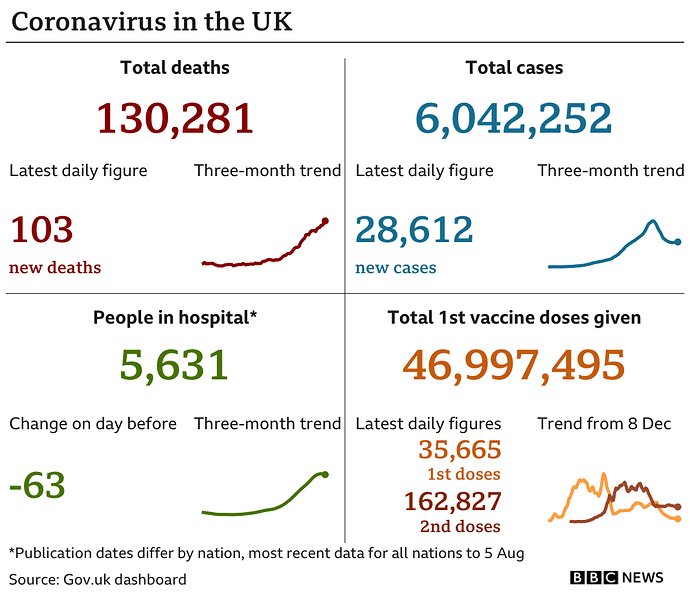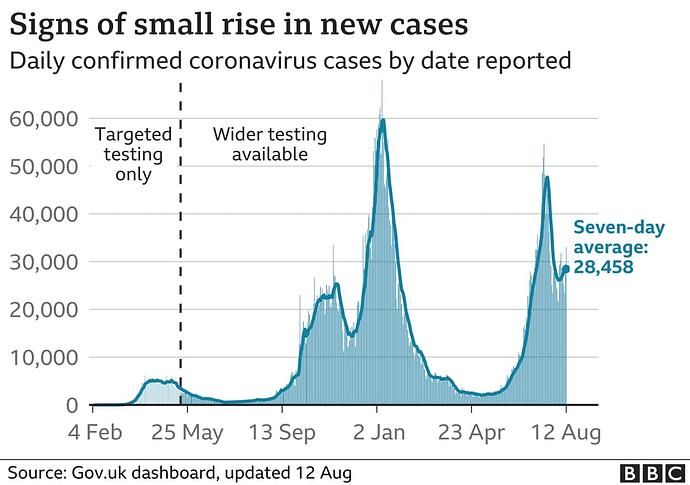This format of this starter post is not intended to be a daily occurrence - simple updates, with appropriate comments, should henceforth suffice.
This information comes from the UK Government.
This document explains the key statistics presented on the UK Coronavirus (COVID-19) Dashboard. It was last updated on Sunday, 08 August 2021.
Testing
There were 825,501 tests reported on 5 August 2021. This shows a decrease of -9.2% compared to the previous 7 days.
Between 30 July 2021 and 5 August 2021, there have been 5,301,919 tests.
Cases
27,429 new people had a confirmed positive test result reported on 8 August 2021.
Between 2 August 2021 and 8 August 2021, 191,019 people had a confirmed positive test result. This shows an increase of 1.9% compared to the previous 7 days.
Vaccinations
47,036,796 people had been given a first dose by the end of 7 August 2021.
39,429,468 people had been given a second dose by the end of 7 August 2021.
Healthcare
742 people with coronavirus went into hospital on 3 August 2021.
Between 28 July 2021 and 3 August 2021, 5,328 went into hospital with coronavirus. This shows a decrease of -15.9% compared to the previous 7 days.
There were 5,631 patients in hospital with coronavirus on 5 August 2021.
There were 871 coronavirus patients in hospital beds with a mechanical ventilator on 5 August 2021.
Deaths
There were 39 deaths within 28 days of a positive test for coronavirus reported on 8 August 2021.
Between 2 August 2021 and 8 August 2021, there have been 601 deaths within 28 days of a positive coronavirus test. This shows an increase of 14.5% compared to the previous 7 days.
Currently, although case numbers are high, compared with 2,000 a day in May, the progress of the pandemic appears to be waning.



